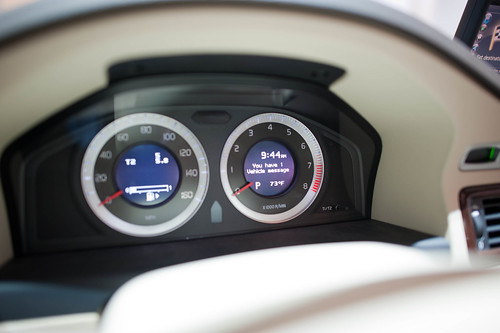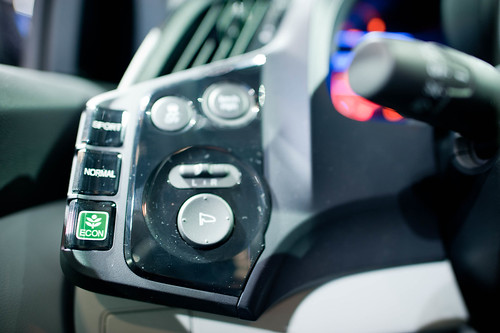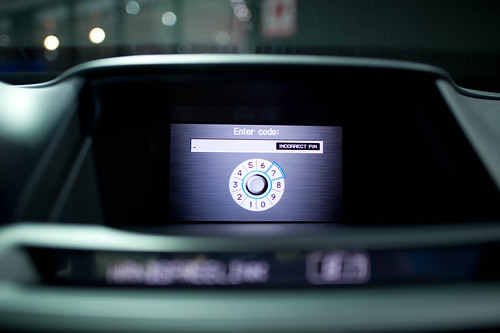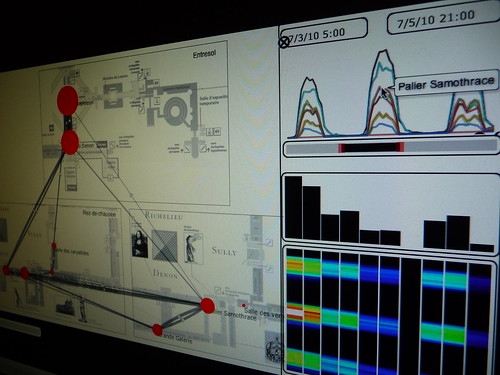
This looks like a fantastic book that will look great next to my Norman Mailer: MoonFire: The Epic Journey of Apollo 11 (GO)

This looks like a fantastic book that will look great next to my Norman Mailer: MoonFire: The Epic Journey of Apollo 11 (GO)
I just need to jot this down so I don’t lose it.
Mike Rea is an artist. This is his artist’s statement which brings together this wonderful relationship between fiction, underachievement, flaws, and failures. Lovely.
For designers, clearly, surfacing, paint colors, materials and interior fabric choices rule out over interface design, which is just plain forgotten about here . Unless it can be justified as, like…Formula 1 inspired, it just doesn’t seem to get any priority as an area of innovation. Look — hybrids barely get any consideration. Even the American car makers booths were bristling with cleaved “Boss” engines reminiscent of the $0.50 a gallon days.
*Sigh.
Well, there’s work to be done. Even the luxury cars could learn a trick or two from the IxDA world..This was a two hour wonder through the subdued LA Auto Show on Sunday. It’s hard to get excited about cars these days, save for the exuberant electric or hopeful hybrid. I chose to annoy myself by noting the wretched center console designs. Who’s in charge of these things, anyway?








Continue reading The Interaction & Interface Design Car Wreck
Well, I haven’t done a weekending in awhile, partially because I was away in Switzerland (for the Swiss Design Network Conference) and then Italy and Spain on vacation and I almost didn’t take any kind of computer, but I did take an iPad partially as an experiment. In any case, I mostly read and photographed and walked and didn’t do any real blogging.
In the meantime, coming back I barely got home when I went off again for some friends’ wedding in Seattle, then back and then a drive down to San Diego for a team meeting with the larger international members of the Design Strategic Projects studio, which was good. We’re onto something here and if I could say more, I would. Aside from the substantial work, I’m also intrigued by the design process — mostly the translation of ideas into their material form as specifications for components and all that. I see it as a way of making the ideas legible in a specific way to those who have to make it. I should say that this is as you might think things work, except that they don’t normally when ideas are coming from advanced design, which in the past has been more involved in *vision or *concept work that rarely if ever becomes something much more tangible than a book, or short film or concept sketches. While I have been intrigued by that sort of work in the past, mostly because anything closer to the metal is often clipped in the expanse of its thinking, or is just ruled impractical or beyond scope — or whatever — now I found that it is difficult to translate, or get it closer to the making-of-things for a variety of reasons. In many cases, I think its systemic. By that I mean that it could be the case that parts of an organization are just completely unaware of another — or they don’t have the languages and linkages to communicate, or the mandate. That’s systemic or organizational. But then even when you do create the linkages you need to translate what might make complete sense in one studio into the terms and idioms of another, or into the language of code and software, or machines for making and fabricating. Whatever it might be — it’s a huge bit of work and in the process of doing the work, you refine the idea and iterate upon it, and learn from it when the gaps start showing, or when questions start coming in for clarity and refinement. Things that at one point you could ignore, or you didn’t even know about.
So — that’s what’s going on at this point. Learning about how to do advanced design thats relevant, rather than just sort of ideating or concepting or visioning.
I also went to Calgary Canada basically just for the night. It was cold. There was snow. I had to hunt around for my Patagonia Windstop, which I found just in a nick of time. And I wore sneakers, which was fine but I felt silly not thinking that snow meant more than cold. In any case, my hosts at the Faculty of Environmental Design had me up to do a talk for their “Design Matters” lecture series, which was fun. Another opportunity to refine some thinking, mostly editing together some new examples of science fiction film clips to explicate the conventions of design fiction.
This is a notecard when I sort of figured out what I wanted to talk about at the Swiss Design Network conference held a few or four weeks ago.
I ended up with something a bit different, but I think carried on with the sentiments of these scrawled notes. The theme of design fiction continues, and what I wrote as a basis for the keynote talk and following discussions is derived a bit from the thinking that was scratched into this card. But, what I think I lost hold of was perhaps a stronger emphasis on the relationship between design, fiction and the making of knowledge — the epistemological aspects of making new things.
No clear way forward on that, but there are some elements yet to be explored.
In any case — I wanted to provide a link to the paper I wrote that accompanied the nicely designed conference proceedings. At the bottom of the post is a link to the PDF of my own paper submission.
I have some additional notes about the conference as well.
James Auger‘s talk was a clear description of his design/art/technology explorations that help describe why and how things/technologies become products. James is doing this from a wonderful perspective — the domestication of things, and the lineages of domestication. He provided this example — from the wolf to strange dogs dressed up like people, or with designer clothing on them. This to me is a simple, concise way of transforming the extraordinary into the ordinary, and everyday — domestication is one example of this. If you can imagine the most ferocious canine which was the great-great-great…grandfather of the variety of wierdly domesticated and kindred dogs (like the dogs people in Los Angeles carry around in their pocketbooks or in baskets) you can begin to imagine anything out of the ordinary becoming quite ordinary and even mundane. Nearly everyone can have a dog because that animal has been made normal and quotidian.
That path from extraordinary to everyday is an important process in the route to productization — making something that is almost illegible as a thing, and making it routine. James also showed the example of a computer from 1927 — and here you can imagine a complex, analog device overwhelming in its obscurity from our vantage point today — to the thing that is quite a number of homes around the world, as ordinary as you can imagine for many of us.
I found the simplicity of this point very compelling — and it is one of those conventions that I think can help in the communication and thinking-through of new ideas. Making the extraordinary ordinary. A convention of designing with fiction.
James also made the point that design fiction might be better stated as “design faction” — paraphrasing his point he said “calling it fiction you lose some of the reality of its ‘existence’ as a social object of some sort.”
There were a number of other intriguing presentations — not all of which I could make as I had to decide between these and workshops which happened simultaneously. I would like to point out an intriguing talk whose paper appears in the proceedings. It is called “Spaceflight Settings as Laboratories for Critical Design” by Regina Peldszus and Hilary Dalke. (Regina and Hilary and Chris Welch also have a paper you’ll enjoy called Science Fiction Film as Design Scenario Exercise for Psychological Habitability: Production Designs 1955-2009 in which they look at the production design in Kubrick’s 2001: A Space Odyssey as a way to run through scenarios related to living in space for a long, long time.)
Overall, I enjoyed the conference and the variety of considerations about design fiction, when and where it operates were useful for my ears. It’s encouraging that design fiction could be taken up as a theme for an entire two days of an event with workshops and everything. That’s actually very encouraging. It’ll be interesting to see where and how far the idea evolves into a practice.
Design Fiction – Props And Prototypes, Swiss Design Network Conference ((PDF))
Continue reading Swiss Design Network Conference – Design Fiction Keynote
This might be an old one, but I just recently heard about it while catching up on my favorite economy and finance Podcast — the brilliantly home-spun Planet Money. In it they are talking about their project to tell the story of how a t-shirt is being made..by making a t-shirt, from buying the bales of cotton to getting it yarned and spun and made into fabric and cut and printed and sold. You can hear all about it in this short podcast which explains how they got this idea from The Travels of a T-Shirt in the Global Economy by Pietra Rivoli.
This is an intriguing story by itself, but I was particularly impressed with the mention and short discussion of a paper called The Piracy Paradox: Innovation and Intellectual Property in Fashion Design by Kal Raustiala and Christopher Jon Sprigman. Here is the abstract of the paper:
Why, when other major content industries have obtained increasingly powerful IP protections for their products, does fashion design remain mostly unprotected – and economically successful? The fashion industry is a puzzle for the orthodox justification for IP rights. This paper explores this puzzle. We argue that the fashion industry counter-intuitively operates within a low-IP equilibrium in which copying does not deter innovation and may actually promote it. We call this the piracy paradox. This paper offers a model explaining how the fashion industry’s piracy paradox works, and how copying functions as an important element of and perhaps even a necessary predicate to the industry’s swift cycle of innovation. In so doing, we aim to shed light on the creative dynamics of the apparel industry. But we also hope to spark further exploration of a fundamental question of IP policy: to what degree are IP rights necessary to induce innovation? Are stable low-IP equilibria imaginable in other industries as well? Part I describes the fashion industry and its dynamics and illustrates the prevalence of copying in the industry. Part II advances an explanation for the piracy paradox that rests on two features: induced obsolescence and anchoring. Both phenomena reflect the status-conferring power of fashion, and both suggest that copying, rather than impeding innovation and investment, promotes them. Part II also considers, and rejects, alternative explanations of the endurance of the low-IP status quo. Part III considers extensions of our arguments to other fields. By examining copyright’s negative space – those creative endeavors that copyright does not address – we argue can we can better understand the relationship between copyright and innovation.
Why do I blog this? I think this gets to the substance of many issues related to intellectual property rights and the arguments on both sides. It’s also suspicious the ways that the anomolies to the “orthodox” and rather instrumental consideration of new ideas are largely ignored, according to the authors. Of course there are going to be outlier complexities to the perceived canonical position that ideas can become property that can be protected in these ways — but the fact that they are not looked at closely as revealing new approaches is very suspicious to me. I don’t believe IP is a solid, like nature — it mutates as a concept. Gobbling it all up and protecting it — or measuring people’s performance based on their ability to create and protect IP — that’s just frustrating nonsense. People often put IP on their CVs as if it were war trophies or something like this. In many ways it reveals a lack of foresight and aspiration for their ideas to say they are protected and proprietary. G’ahhh.. It drives me nuts sometimes.
Oh, on a more happy note at the end of this podcast you’ll hear that our friends at Tinker Studios in London are going to have their t-shirt idea implemented in this Planet Money t-shirt — a QR Code on the t-shirt that links to, presumably, the story about how the t-shirt was made, which is the story that Planet Money is working on.
Here’s a link to the Planet Money Podcast.
While in Basel a few weeks ago, Nicolas and Cris and I stole off for a few moments to check out this typically expensive art and technology exhibition in the docks region of the city. I forget the name of it, and also did not have any paper money so I didn’t get an exhibition catalog. Nicolas has a more complete description of the project on his recent post about Grafikdemo by Niklas Roy.
I just wanted to share a thought I had about the project which is the curious way it was manufactured. Interior to the display cabinet of this lovely old Commodore is a physical object — a lattice frame colored in a green florescent paint of some kind that made it look like it was the old fashioned style of CAD rendering where everything was green basically (I think) because people were using green CRTs (for those too young to remember — that’s cathode *ray tube, which now sounds quite archaic). The object can turn and tumble across the x, y and z axis by using the keys on the number pad of the CBM. It’s quite nice. It’s both an homage to an earlier day and a joke, of course, in a way. Nice project.
Continue reading Grafikdemo by Niklas Roy
I found this story on NPR that I heard this morning on this topic of “Hint Fiction” — fictional stories done in 25 words or less — to be quite intriguing. It’s less because it seems like the evolution of story telling in the era of 140 character Tweets and all that. That angle is quite boring, but it seems that this was not the motivation. These are like compelling little provocations that are small moments suggestive of a larger narrative. Take these examples:
David Joseph
Polygamy I miss her more than the others.
The reasons I think I’m drawn to this idea is because it appears to be a provocative form — one that requires speculation about what surrounds the the larger context. Small moments that are incomplete but nonetheless highly suggestive. This is something that I feel is related to a genre convention of design fiction, especially in the forms that it has been done here in the studio — for better or worse, confidential work that I couldn’t share here. These are intimations of what might be — perhaps unexpected experiences that occur around the contours of a larger set of circumstances. Like — seeing a curiosity, something that is suggestive and evocative but not necessarily the *whole story. Rather than emphasizing the main “through line” we just show the things around the edges and allow the rest to be filled out by the imagination and shared histories and shared expectations of the audience.
Why do I blog this? Looking for new and interesting ways to design unexpected but relevant and provocative things. Being plain and straightforward may not always work in the art and practice of seducing people into a peculiar possible future.
Continue reading Hint Fiction — Short Evocations of Larger Stories
I’ve been away for awhile so obviously I’m just now catching up with some notes for the events and activities of the last few weeks. One thing I want to make a note about is the fun workshop that Nicolas and I facilitated at the Swiss Design Network conference in Basel Switzerland late last month. The workshop was largely Nicolas’ organization and we took advantage of the conference theme of “Design Fiction” to consider the topic of failure in design — failure as a guide and approach and provocation together with the considerations that design fiction can offer.
Nicolas has posted the notes from the workshop
It was a relatively short workshop — a couple of hours in total. Initially I was nervous that there would be not enough guidance to allow the participants to grab onto the material enthusiastically. That proved to be wrong. After an initial presentation that went over the topic of design fiction and failures that Nicolas had prepared, we broke the approximately 30 or so participants into groups of four or five individuals. There were three assignments that we had prepared that each group was meant to conduct. After completing each assignment — which lasted from 20-25 minutes each — the group turned inward and shared some summary insights, results and conclusions. They didn’t know all the assignments ahead of time.
The first assignment was to consider where and when failure happens in design. Without a specific definition of what constitutes failure, the assignment was meant to warm things up by creating a debate and set of examples as to what failure was and when and how it occurs. From Nicolas’ notes (my notebook has escaped me temporarily):
This assignment was useful to begin the thinking about failure. The goal was less about creating a definitive or definitional list and more about thinking beyond and using examples as motivators and things to think with.
The next assignment was essentially the first but to create examples that one might anticipate as a typical failure in the future — the design fiction failures. Things that could occur given that everything fails to meet our highest expectation or (as I’m particularly interested in) the highest of the hype that surrounds new designed stuff. Epic failures, or just routine annoyances were all open for consideration. How might the cloud computing promise fail in both the major disaster ways — as well as the small, wtf!? sort of ways.
Again, from Nicolas’ notes:
I was particularly taken by the 3D printer example. There’s of course lots of excitement about the possibilities of 3D printers in the home so that everyone makes their own stuff that they need. But, making stuff is hard and inevitably open to all kinds of crazy failures such as described here. Also — what do people do with the materials when they mess something up? How is the plastic (or whatever it ends up becoming — maybe noxious nasty stuff) get recycled? Will there have to evolve an entire system of rematerializing the goop? What about the equivalent of the print failures we often experience where one document ends up printing one letter per page, after page after page and we don’t notice until fifty sheets of paper have been used? Or when we scale something wrongly and the machine blindly goes ahead and prints something at 3 meters when we meant 3 millimeters? All these sorts of things will happen — can we use these insights to help make decisions about what and how to design? Can we start to communicate these failures as a way to design not with the expectation that the world is perfect — but that the results of designs have chinks and kinks in them?
The final activity was to think about possible taxonomies for designed failures — what are the types and kinds of failures as we’ve discussed them in the previous two assignments?
Why do I blog this? Well — just mostly to get some notes from the workshop up to share. I’m learning quite a bit from Nicolas on the failures theme, and perhaps its a way to answer a question that Chairman Bruce has lofted — now that we “get” the idea of design fiction and it seems to be inspirational for folks and useful in that regard — witness the theme of the Swiss Design Network conference this year. But..okay. We get it. Now what? How does the idea of design fiction either operationalize or become part of specific sorts of design practices in some informal or formal ways? It’s happening of course — all over the place and not because of this idea of design fiction itself, either how I’ve discussed it over the last 18 months or so, or how it’s been described and enacted by many people and agents. It’s not just about science fiction of course — and this was the topic of a paper at the conference that I may have the energy to describe in an upcoming post. But it is useful in very direct ways with the activities and goals of design generally speaking, that much is clear.
These past weeks I had to chance to work with the alpha version of Impure, a new visual programming environment developed by my good friends at Bestiario. Impure offers a full visual language to retrieve, manipulate, process and visualize information:
Impure allows the acquisition of information from different sources, ranging from user-specific data to popular online feeds, such as from social media, real-time financial information, news or search queries. This data can then be combined in meaningful ways using built-in interactive visualizations for exploration and analysis.
Based on an event-based development structure, the software consists of 5 different modules.
1. Data Structures, which hold data coming from a data source (e.g., Number, String, List, etc.).
2. Operators, which have 1 or more receptors that enable the system to perform a specific operation (e.g., addition or subtraction).
3. Controls, which act as dynamic filters (e.g., interval selectors).
4. Visualizators, which receive data structures from operators or controls and visualize it. They usually return emitters on selected visual objects that can be used as input into another module.
5. APIs that allow real-time communication with various data sources such as Google, Twitter, Facebook, Flickr, Delicious, Ebay, etc.
The prime objective of Impure aims at bridging the gap between ‘non-programmers’ and data visualization by linking information to programmatic operators, controls and visualization methods through an easy visual and modular interface. Yet, I must admit that Impure has a lot to offer to programmers and data specialists; particularly those who necessitate to “sketch with data” as part of their practice. In other words, the type of professionals who process and visualize datasets as part of their investigation process rather than uniquely generating results.
My experience in leading investigations that aim in extracting value from network data, exploratory data visualization is crucial to quickly recognize patterns and understand complex events. But as my projects involve diverse sets of professionals (e.g. ) being able to quickly sketch an interactive dashboard is a guarantee to have a common language that helps the different actors in asking better questions, getting better feedback from them and properly focusing the investigation (some call it visual thinking or to some extend predictive analytics). Ultimately, the use of plateforms such as Impure offer that opportunity to collect insights that give a project the upper hand in decision making. Moreover, the flexibility of a visual programming environment permit to go beyond the limited possibilities for design of GIS and statistical softwares while reducing the fast-prototyping time necessary to program specific interactive visualizations (e.g. see the animations of traffic density and flows in Zaragoza, Spain, based on real-time information) produced in a few hours with Impure).
Practically, in addition to quickly share a first exploratory analysis, environments such as Impure can simplify the practice of ethno-mining particularly to co-create data with participants of the field research (see Numbers Have Qualities Too: Experiences with Ethno-Mining).

Sketching a solution for the Louvre Museum with Impure (see the complete “Sketching with data” Flickr set)
Similar approach to “sketching with data”, Stamen that has for long been leading investigative data visualization projects generally we divide their process into three distinct phases—explore, build and refine. Based on their experience, they outlined some of their common assumptions about data visualization and recommendations for how to do this kind of work; one particularly relevant to the exploration (i.e. sketching) phase:
(19) Start and End With Questions
“Traditional statistical charts can be a good first step to generate questions, especially for getting an idea about the scope of a data set. Good questions to start with include “how many things do we have”, “what do we know about each thing”, “how do the things change over time”, “how many of each category of thing do we have”, “how many things are unique” and “how many things is each thing connected to”. I don’t believe that any visualization can answer all of these questions. The best visualization will answer some questions and prompt many more.”
Apparently, they are engaged in the a similar path as Bestiario, using a Knight News Challenge grant to build a series of tools to map and visualize data that is truly Internet-native and useful. Flexible and “internet-native” environments that make easier to work with information are also emerging in the data storage end of “sketching”, for instance with the Barcelona-based FluidDB.

At Barcelona Design Week, sharing an animation of the traffic flows in Zaragoza sketched with Impure using real-time data feed from BitCarrier.